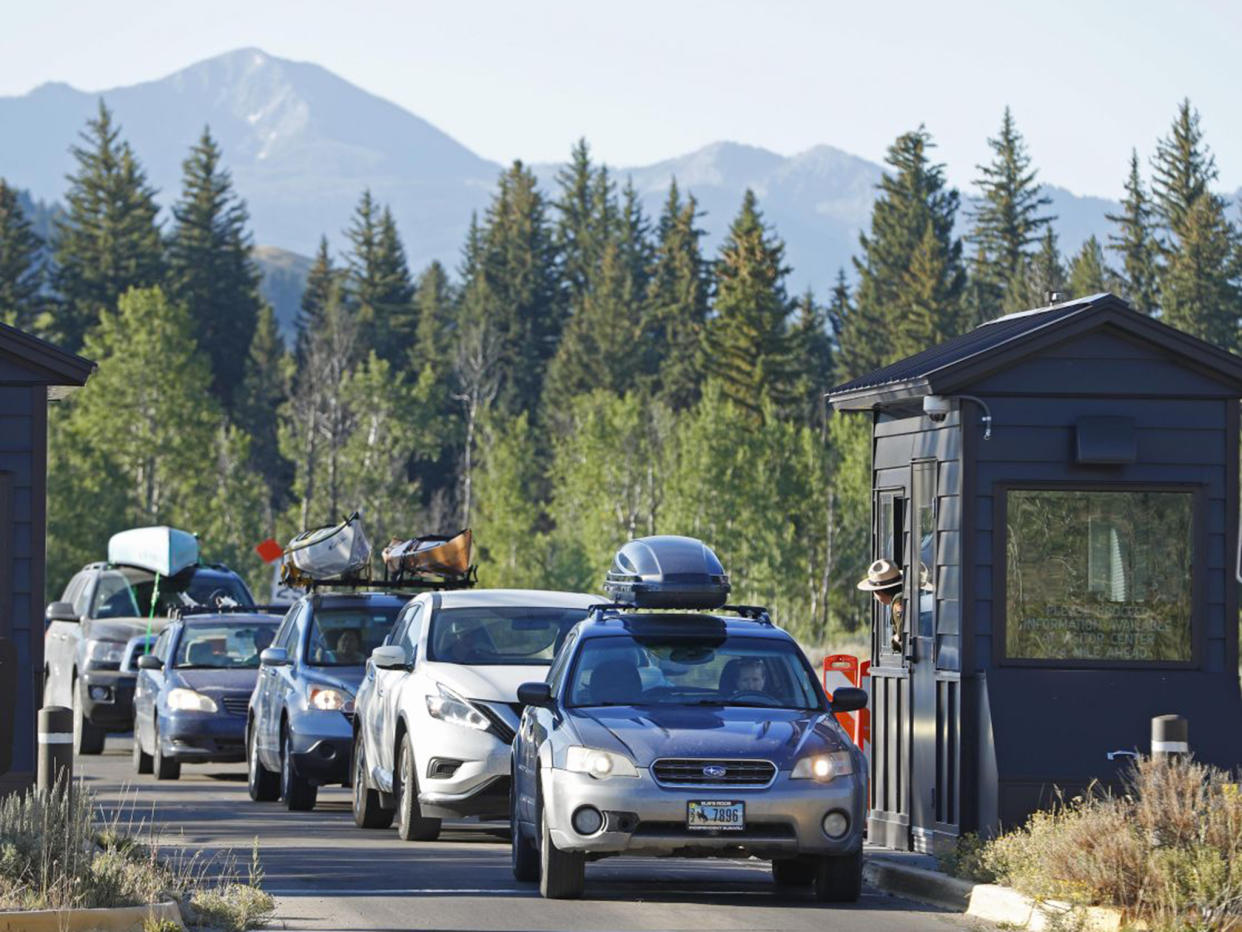Solar eclipse 2017: US National Parks expecting gridlock on 'busiest day in history'

The state of Wyoming is accustomed to visitors: it is home to the vast majority of Yellowstone National Park, the first in the world; Grand Tetons National Park; and ski resorts such as Jackson Hole.
But as Monday’s total solar eclipse approaches, the National Park Service says: “August 21 is anticipated to be the busiest day in the history of the park”.
The eclipse begins at dawn over the north Pacific, about 1,500 miles west of North America. The “line of totality” – the narrow band where the moon completely blocks out the sun – crosses the Oregon coast at 10.16am Pacific Daylight Time. Over the following 90 minutes the shadow will sweep across the centre of the US before departing over the Atlantic shore at 2.46pm, Eastern Daylight Time, close to Charleston, South Carolina.
The clearest skies are expected over the eastern parts of the Rocky Mountains. With forecasts predicting cloud cover for much of the eastern half of the US, Wyoming is braced for a late surge of visitors desperate to experience the cosmic coincidence.
Previous weather data shows that Wyoming has very good odds of clear skies. It is also home to the most spectacular scenery in the US, particularly in the Grand Tetons National Park, which is crossed by the line of totality.
In any normal August the area would be extremely busy, with most places to stay fully booked and roads crowded.
The Great American Eclipse website says: “While there are many hotels and campgrounds in this area, they will undoubtedly be inadequate for the onslaught of eclipse tourists drawn to the most majestic mountains in the contiguous 48 United States.”
The pressure of numbers keen to see the eclipse has led the National Park Service to warn visitors to Grand Tetons: “Expect heavy congestion, traffic gridlock and long delays.”
Five viewing areas have been set up, but parking lots for them open only at 6am on Monday. National Park admission will be free, in an attempt to keep traffic moving.
After the event, congestion is expected to be even worse, with thousands of motorists all trying to leave at once. “Roads may come to gridlock,” says the National Park Service.
“Visitors should have a full tank of gas and extra food and drinks in anticipation of long waits.”
Further north, Yellowstone National Park is warning against using the south entrance due to the expected congestion.


